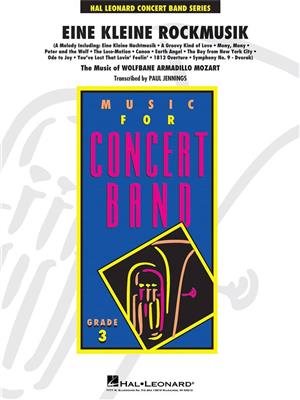Results
-
 £52.99
£52.99We Wish You a Merry Christmas - Jerry Williams
Here's a clever and delightful arrangement of a classic carol from the pen of Jerry Williams! This will definitely get everyone in the Christmas spirit. Your band will have a ball with this one!
Estimated dispatch 7-14 working days
-
 £52.99
£52.99Erika's Dream - Ed Huckeby
This selection is a perfect choice for the development of legato- style performance techniques. Complete with the "handsome prince" and the "dance at the ball," this outstanding lyrical work conveys its qualities through the flowing melodic line and simply stated harmonies. Your audiences will love the musical imagery in Erika's Dream.
Estimated dispatch 7-14 working days
-
 £60.50
£60.50Broadway One Step - Karl L. King
Your band will have a ball presenting this vintage ragtime/dixieland style march in concert. It has a bright flavor and uniqueness that definitely puts it into the top circle of Karl King "hits".
Estimated dispatch 7-14 working days
-
£98.99
Sing-O-Rama
For band with audience sing-a-long. Perfect for any lighter program where audience participation is appropriate, this medley includes "Take Me Out To The Ball Game," "Let Me Call You Sweetheart," "When Irish Eyes Are Smiling," "Bicycle Built For Two," and more! Let's all sing along! Includes reproducible lyrics.
Estimated dispatch 7-14 working days
-
£71.50
Heart of Paddy Whack - Ball
Estimated dispatch 7-14 working days
-
£65.99
To Have, To Hold, To Love - Ball
Estimated dispatch 7-14 working days
-
£54.99
-
£54.99
A Little Bit of Heaven, Who Knows? - Ernest R. Ball
Estimated dispatch 7-14 working days
-
 £64.99
£64.99Eine Kleine Rockmusik - Wolfgang Amadeus Mozart
By the time the Mozart family tree had blossomed into the twentieth century, there was very little genius left in the bloodline. Unfortunately, though, at least one unscrupulous descendant, Wolfbane Amarillo Mozart, decided to capitalize on the family name by becoming a rock and roll composer. His only real talent seems to be plagarism, but your students and audiences will have a ball unraveling his zany conconction.
Estimated dispatch 7-14 working days
-
 £90.30
£90.30
